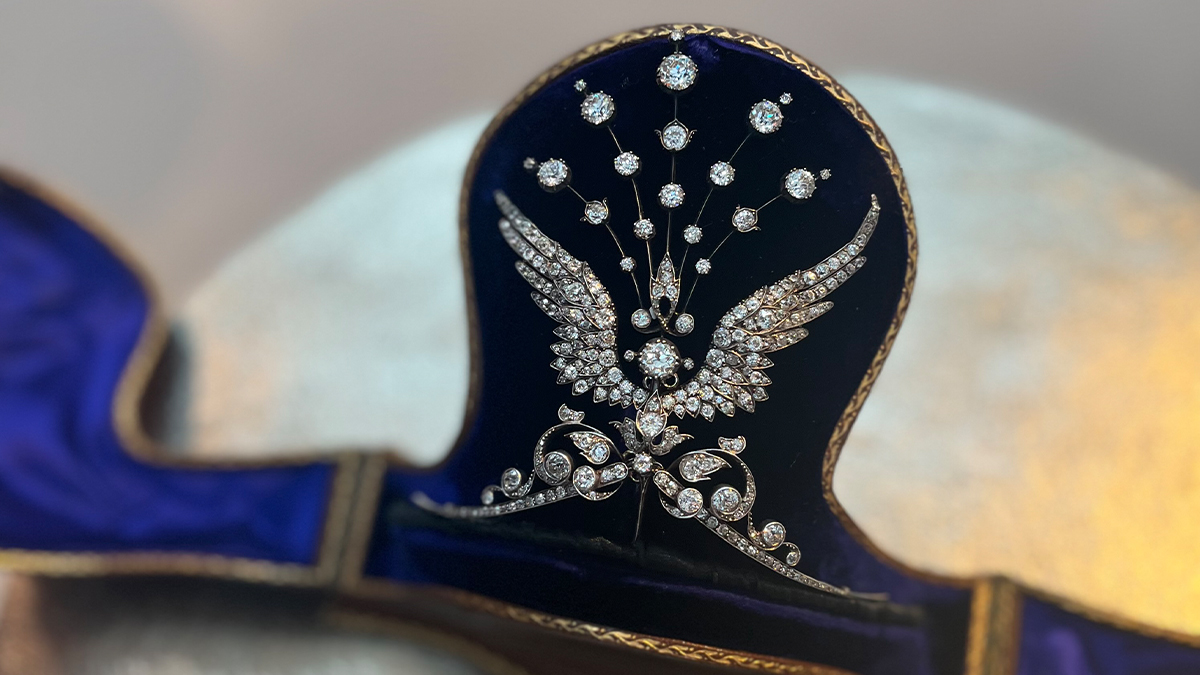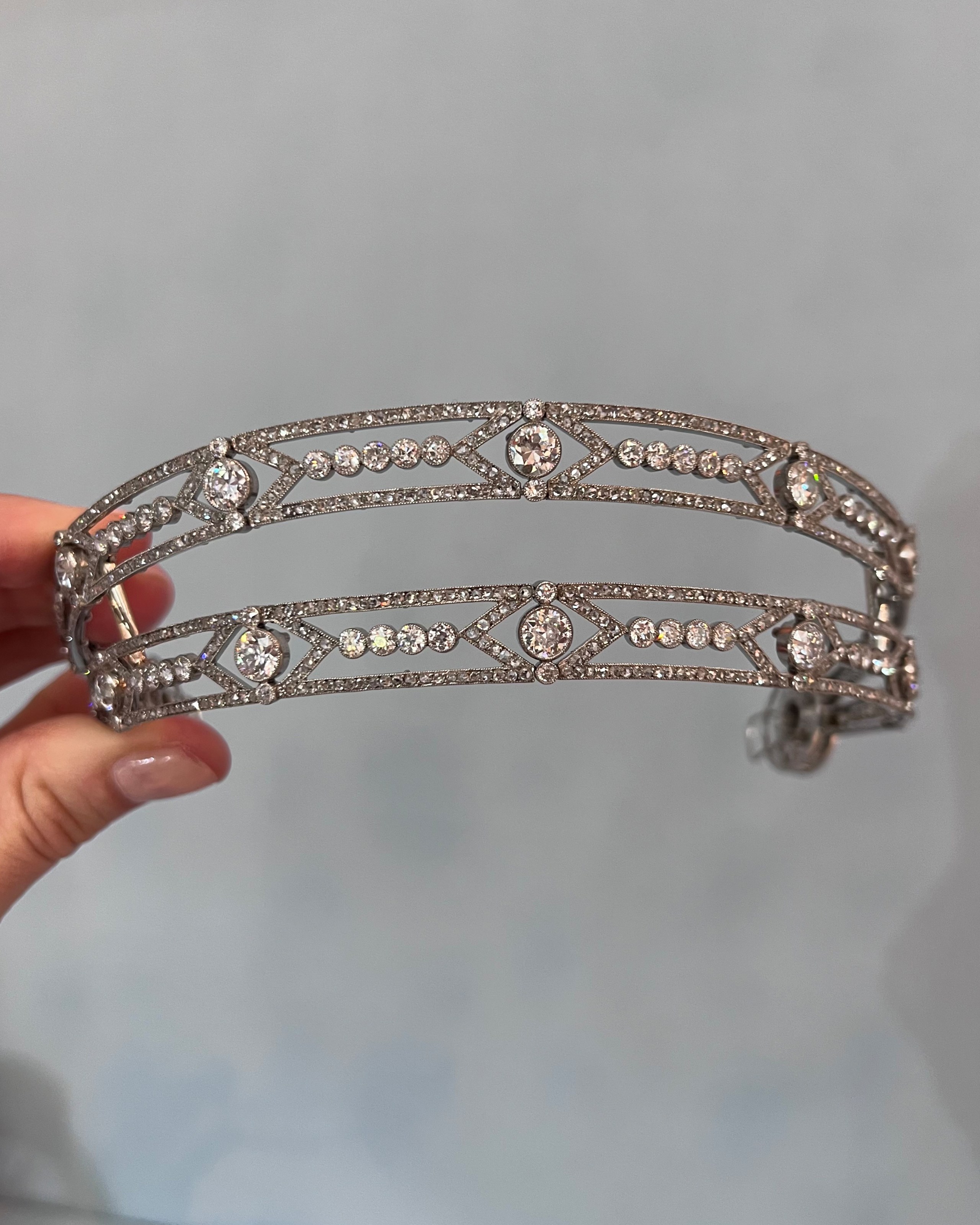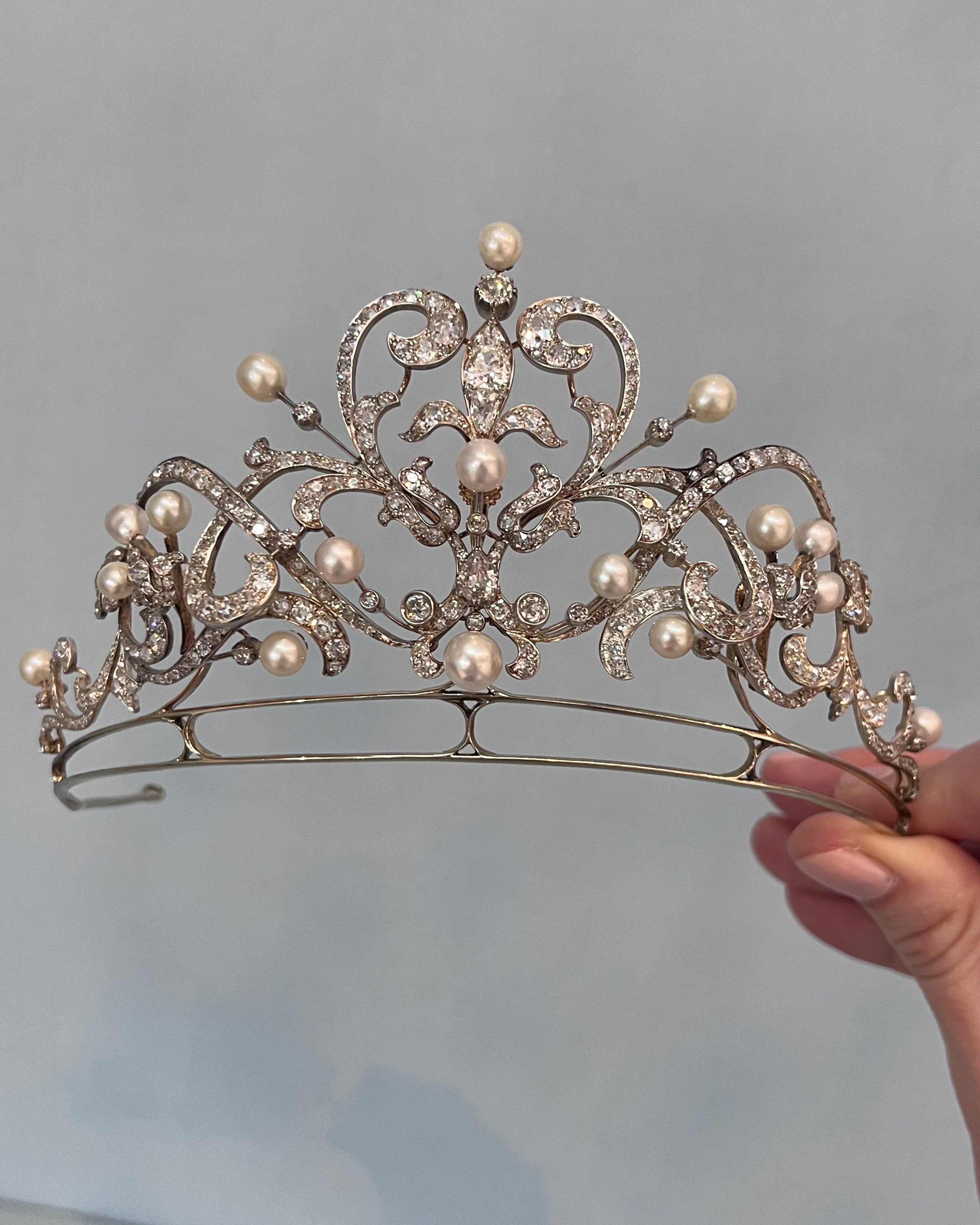Bored of Stealth Wealth? Come Tiara Shopping

“This tiara was regularly worn to dinners and parties”—Arabella Hiscox, jewelry specialist at Christie’s is giving a preview to the Natural Diamond Council of the tiaras that are up for sale at the biannual London jewelry sale.
The diamond tiara, still in its original box, is more than a century old and reminiscent of a glamorous era. With ever-growing sales of Birkenstocks and jeans, one would be excused from thinking that tiaras belong to bygone times. But Arabella mentions that today’s buyers include partygoers with a recent ball in China creating a spike in demand for antique tiaras.
The natural diamonds in this 1900s tiara are close to 18 carats of old cut and rose cuts that hold a softness reflecting the diamond cutting techniques of that time. These older cut diamonds tend to shine at their best under candlelights that give them a glowing soft luster.
The aigrette design evokes the lightness and grandeur of a plume of feathers, and this tiara allows the wearer to emphasize the design’s origin by fastening actual feathers to its top.
The tiara converts easily into a combination of brooches, hatpin, and pendant with the help of antique tools hidden in a leather compartment in the original case.

Another tiara with a regal party past is the Boucheron diamond tiara which has been worn at Buckingham Palace receptions and formal State Openings of Parliament. Its aristocratic provenance and Boucheron origin propel the sales estimate of this tiara to $130,000-190,0000.
Boucheron’s high standing in the world of tiaras can be attributed to over 250 years of tiara-making tradition with over 2,000 unique styles, many with a nod to the garlands worn by Olympic victors where the headpiece is said to originate.
This design is geometric and stark in its expression in a way that feels almost contemporary. Created in the years preceding Art Deco design—circa 1910—it benefits from the then revolutionary introduction of platinum, making jewelry pieces very light and requiring less visible metal in the stone setting. As we can see with this tiara, the diamonds appear to be magically connected to each other.

The third tiara on the block is the Diamond and Cultured Pearl Tiara circa 1900. The Art Noveau design, popular during the Belle Epoque period, is centered around a romantic motif with four different diamond shapes (cushion, pear, oval, and rose) creating a heart shape with surrounding foliage.
With a few quick moves, this tiara converts into a necklace, and the presumed rigidity needed to hold up a tiara proves incredibly pliant and soft around the wearer’s neck. At 60.5 grams it is also surprisingly light and as a tiara, it flexes comfortably around the head.
This tiara also surprises when it comes to price estimates, at a smidgen of the Boucheron estimate, the tiara can be yours for $10,000-$15,000.
